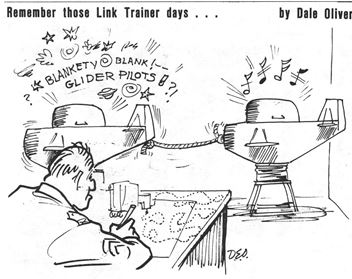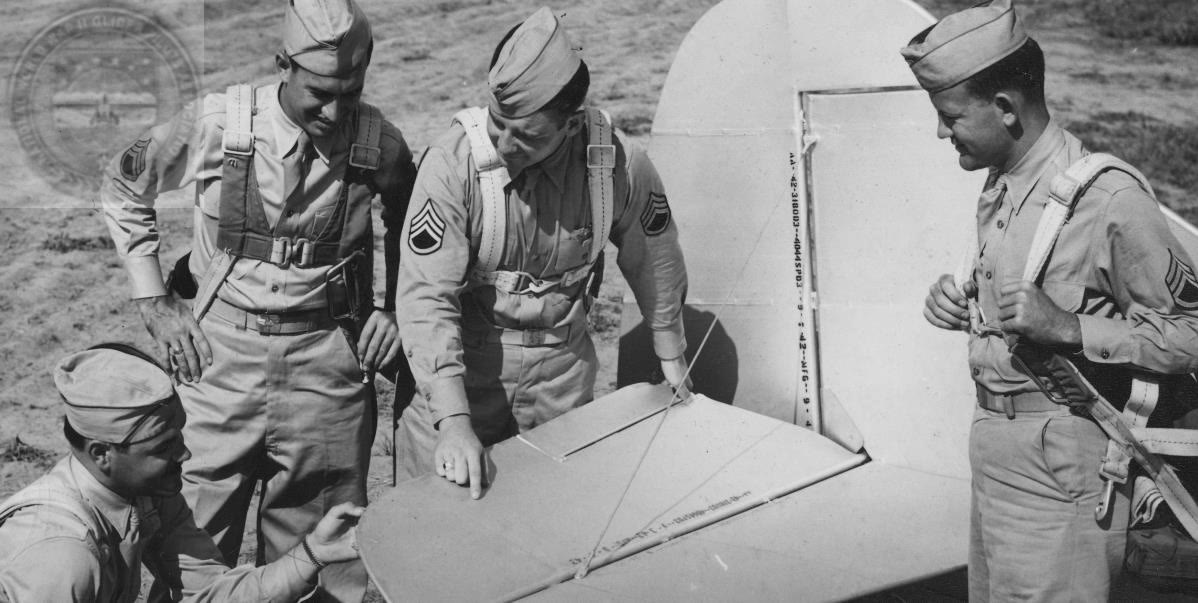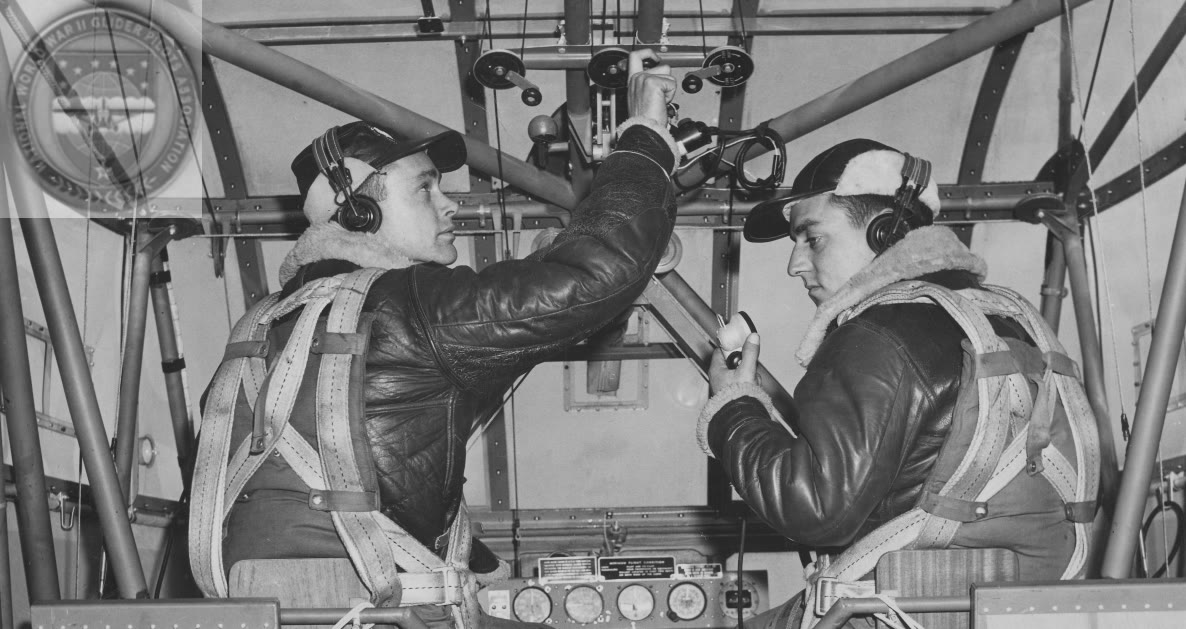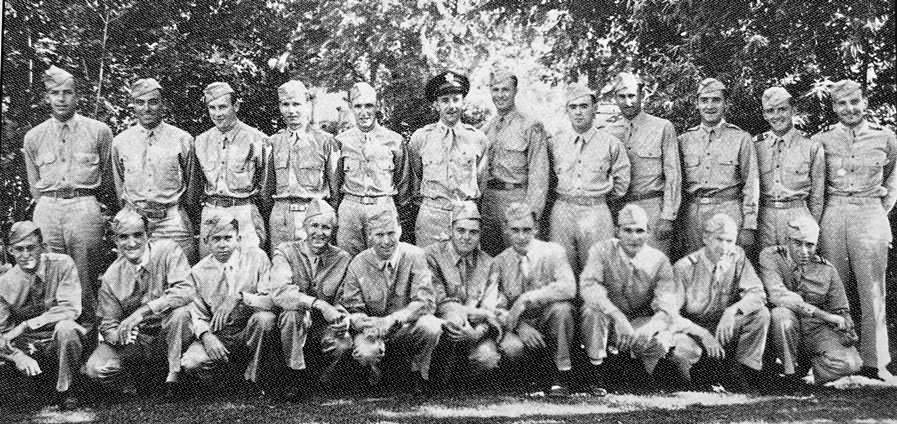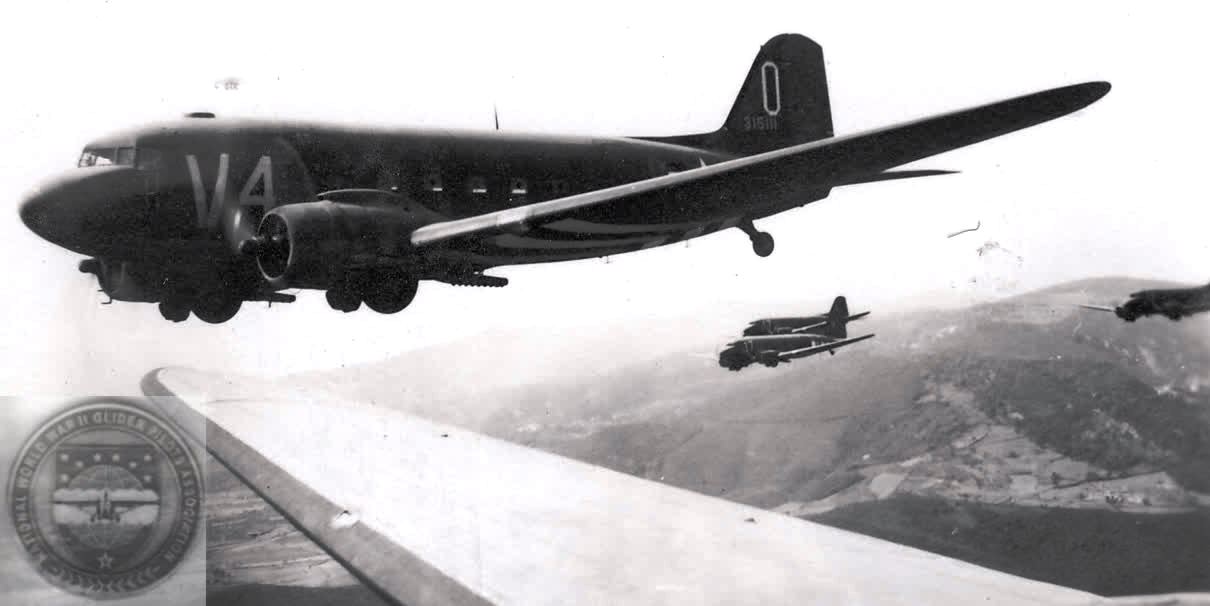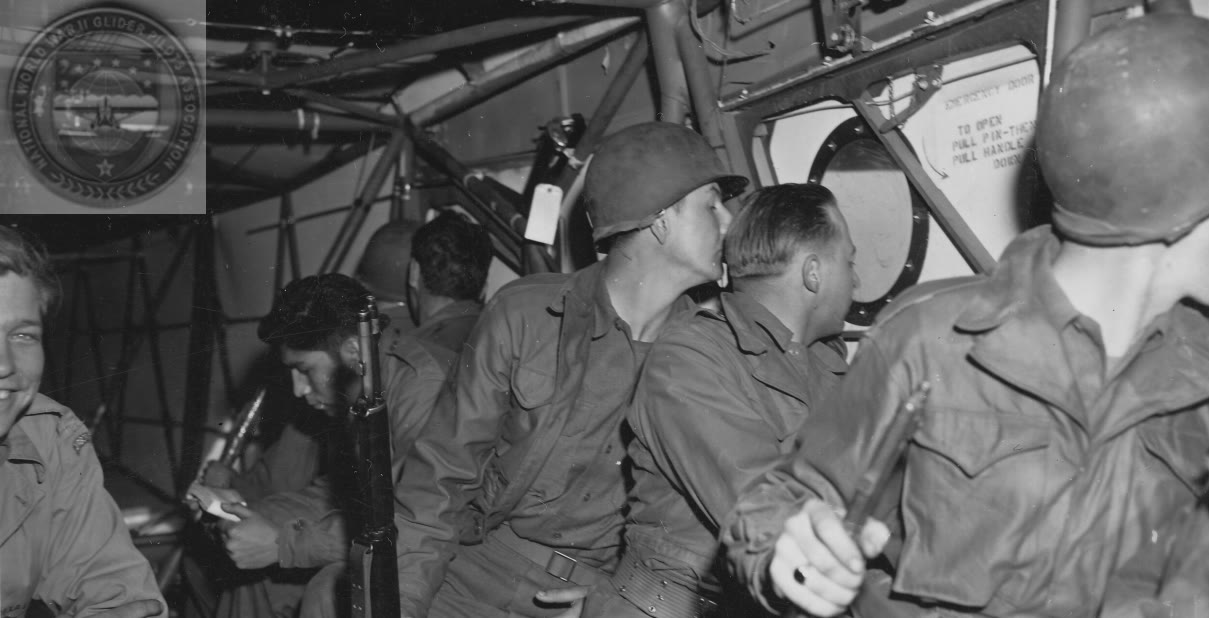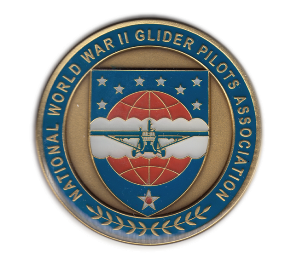|
As many of you know, all glider pilots assigned to Operation Varsity were placed on detached service with the 17th Airborne Division after they delivered their load. This marked the first time glider pilots were officially tasked with serving as infantry after delivering their cargo. To prepare for this new role, the 17th Airborne, now based in England, was responsible for training the glider pilots. Of the ten groups in the 53rd Troop Carrier Wing, two squadrons from each group participated in this initial training. The 75th Troop Carrier Squadron from the 435th Group documented this training in remarkable detail which included the 76th Squadron.
SEVENTY-FIFTH TROOP CARRIER SQUADRON, Historical Report, November 1944:
Infantry Training by the 17th Airborne Division
Excerpt from the 75th Troop Carrier Squadron Historical Report – November 1944
Deployment for Training
November 14, 1944
The following glider pilots from the 75th Troop Carrier Squadron proceeded to Ogbourne St. George for infantry training with the 17th Airborne Division:
| Capt. Gordon, Charles O. | 1st Lt Goller, Fred F |
| 1st Lt Heden, Robert M. | 2nd Lt Archambealt, Robert W. |
| 2nd Lt Ashton, Charles F. | 2nd Lt Birkedahl, Walter J. |
| 2nd Lt Miller, Grady W. Jr. | 2nd Lt Myers, Duane C. |
| F/O's Alterio, Ernest | Arris, Raymond T. |
| Ballantyne, John | Decker, George E. |
| Brindle, Elwood | Butts, Wallace L. |
| Berry, Vernon K. | Cannon, William R. |
| Collins, Carver K. | Crocker, Kenneth L. |
| DeCovich, Joseph E. | Derr, Samuel |
| Faris, Oliver C. | Fischer, Robert W. |
| Hendricks, Robert W. | Hollinger, George M. |
| Jackson, John R. | Jordan, Joseph M. |
| Lanou, Joseph R. | Lett, Roy E. |
| Lucas, Charles F. | Manning, John G. |
| McGehes, William G. | Neff, Jack D. |
| Nelson, Donald R. | Pratt, John w. S. |
| Walker, Joe A. | Whisehand, John G. |
Living Conditions and Orientation
Pilots were billeted in permanent British barracks, constructed of brick, with excellent washing and latrine facilities, superior to those at their home station.
Before the day was over, the orientation talks were augmented with discussion by Major General Williams, Ridgeway and Miley who were all very much interested in this initial training given by the 17th division to the Glider Pilots.
Training Schedule
Week 1: Weapons Training & Physical Drills
- November 15 – Introduction to the M1 Rifle. Field and detailed stripping, care and cleaning, use of the sighting bar, “dry-run” on the prone, kneeling and sitting positions; physical exercises and double-time. That night MI’s were issued and it was the duty of every man to clean his rifle.
- November 16 – Dry fire practice, range procedures, and scoring methods. ..there were dry runs on both slow and rapid fire in all positions, explanation of range procedure and use of score book augmented with physical training. General Ridgeway visited this training in the field.
- November 17 – Training in range pits at Liddington Range; heavy rain delayed live firing. ..during a continuous rain work was done in the range pits at the Liddington Range which was about five miles from the camp-site. It had been planned to fire on this range during the afternoon but the volume of rain postponed the activity, hence, the afternoon was spent in cleaning rifles and drying the mod on shoes, trousers, etc.
- November 18 – Live fire training: zeroing M1s, slow and rapid fire drills. Again on the range in the mud on the 18th; M1's were zeroed in; slow firing from kneeling, sitting and standing positions; followed by work in the pits during the afternoon
- November 19 – Rest day.
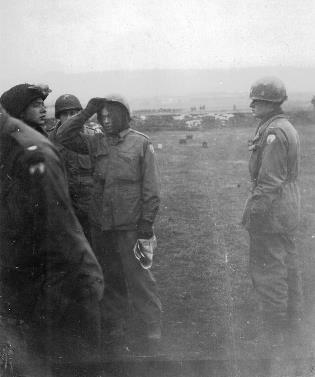
F/O Steven S. Place (Hooded), Lt R. B Fowler Looks on.
Week 2: Advanced Infantry Skills
- November 20 – Training with the .50-caliber machine gun and bazooka firing. With the opening of the new week, instructions on the 50-caliber machine gun with the M63 mount (AA) were given during the first morning. The afternoon was again spent on the Liddington Range, this time firing the Bazooka at a wrecked tank and also firing one hundred rounds with the 50-caliber MG. This was followed by thirty minutes of close order drill.
- November 21 – Explosives training and booby-trap exercises. During the morning of the 21st the entire instruction was devoted to explosives and their use particularly with the various types. Each man had the opportunity to prepare and detonate an explosive charge. This was followed by a demonstration of a “crater-blast&rduo;. In the afternoon the instructions were on booby traps the construction of push-pull and release types which was followed by half of the class laying booby traps and the other half subsequently finding and disarming these traps.
- November 22 – M3 submachine gun training, map reading, and a night compass march. On the 22nd the M3 MG was used on the range in a familiarization course. In the afternoon classes were held on map reading and the use of the compass. [Stating at] 1900 there was a night compass march in which the "students" set out in groups of three and four spaced at five-minute intervals. The groups reported to the destination from 2230 until 0330 the following morning. The weather was inclement with haze and rain which restricted visibility to several feet.
- November 23 – Thanksgiving dinner. During the morning of the 23rd there was a critique on the compass march during which overlays were made of the course. This was followed by a first-lass Thanksgiving Dinner and then complete relaxation during the afternoon and evening.
- November 24 – Scouting and patrolling exercises, terrain appreciation, and night reconnaissance. messages and message books and day and night reconnaissance patrols. This was augmented by a training film on reconnaissance. From 2000 until 2230 the Airborne gave a demonstration on night patrolling.
Final Training Days
- November 25 – Training on the .30-caliber machine gun and live fire drills. actually practicing in patrols, they practiced formations and crossings of different types of terrain. This was followed by a patrol problem in the afternoon.
- November 27 – Squad formations and a full-scale division maneuver.
- November 28: The 28th was to be used for record firing on the MI, however, weather prevented this, so lectures were given on the history of the organization of Airborne tactics, technique, and units. In the afternoon, Major General Miley talked about what the duties of the Glider Pilots would be in the event the 17th Airborne Division was used in an actual operation against the enemy. He emphasized that the Glider Pilots would have to set up an independent organization modeled on an infantry company or battalion, which would probably not be used as offensive ground forces but would be required to defend themselves. Following the General’s lecture, there was a review of morning reports and circumstance reports, which was meant to familiarize everyone with one administrative side of the Glider Pilot Combat Unit.
- November 29: AT and AP Rifle Grenades were fired on the range at a nearby range. Following this were lectures on military government and First Aid.
- November 30: The morning was used for firing the carbine for record, and during the afternoon, familiarization firing of the BAR [Browning Automatic Rifle] was accomplished.
- December 1: The entire day was used for firing the rifle MI for record on the Liddington Range. Our squadron qualified all members with both the MI Rifle and also the Carbine.
- December 2: Field and detailed stripping and dry runs with the .30 Cal MG with the M2 tripod mount were conducted all day.
- December 4: All day was used for the .30 Cal MG—the morning for field stripping and dry runs and the afternoon for actual firing on the range. From 1900 to 2030, there was an intelligence lecture on OP’s and messages.
- December 2-5 – Training on the .30-caliber machine gun and live fire drills.
- December 6-8 – Squad formations and a full-scale division maneuver.
- December 9-11 – Defensive tactics, foxhole digging, and mine demonstrations.
- December 12-13 – Final firing exercises and return to home station.
Impact of the Training
The 435th Troop Carrier Group completed this training, achieving the highest average firing scores.
On December 18, 1944, a second group from the 438th and 434th Troop Carrier Groups arrived, but due to the Battle of the Bulge (December 16), training was canceled on December 19, and the 17th Airborne Division was deployed to the front lines.
The 435th Glider Pilot Infantry Company
Despite training cancellation, Major Charles Gordon of the 435th formed the 435th Glider Pilot Infantry Company, later participating in the invasion of Germany on March 24, 1945.
Edited by Patricia Overman
|

